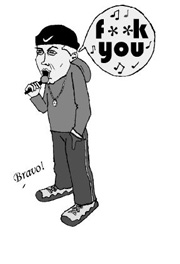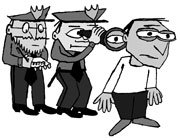Calls for Mayor Paul Schell to resign or otherwise run away from office will have to wait for the next embarrassment, but it’s wise to remember now who would replace him. The new council president, Margaret Pageler, fancies herself a principled independent. She has a reputation as a tireless worker who has been able to study and effectively legislate on complicated issues like municipal utilities. Problem is, she almost always votes the wrong way. And her abrasive personal style is already getting her in trouble with council colleagues. Along with Schell’s weakness and council tensions, it promises to be a snippy new year at City Hall.
Pageler, among other curiosities, appointed herself to eight of the 11 council committees: chairing two, vice-chairing two more, a member of two others, and an alternate on two more. She’s since backed off and taken a regular committee load. Pageler’s original plan would have been spreading herself thin—but giving herself a lot of power.
She’s also rubbing some colleagues the wrong way. The announcement that Jim Compton would head the WTO investigative committee came publicly at a press conference and was not told first to other council members who wanted the post. Says one council aide, “I see Pageler and everyone butting heads. It’s kind of like den mother [former council president Sue Donaldson] vs. Nurse Ratchet [Pageler].” Donaldson was also a downtown limousine liberal, but more of a politician: before screwing you, she’d tell you—very nicely—why she was about to do it. Pageler just charges ahead.
The legislative priorities of the council shouldn’t come as much of a surprise: I-695 weighs heavily on their minds, and last year’s budget surplus is being quickly eaten away by mounting WTO bills. That investigation also promises to be politically wired, influenced by council relations with the public, Mayor Schell, and the police department. Then there’s a new police chief to be hired and confirmed, and a new police accountability mechanism to try out—with a new police guild contract. Charged times ahead.
Actions, not gestures
Last year I spent a few weeks slogging through the lengthy but worthwhile 1989 Taylor Branch biography of Martin Luther King Jr., Parting the Waters. I always have mixed feelings about the holiday for Martin Luther King Jr.’s birthday. As the public ambivalence toward recent WTO demonstrations showed, civil disobedience that challenges power, the type championed by King, is none too popular. We choose to forget that King was largely a public pariah among whites (that is, real citizens) in his time. Today, we wonder how folks like the Direct Action Network were so invisible in the weeks before WTO. King’s followers were at least as invisible.
In his last years, King moved to a much broader vision of the changes that were needed to bring about a just society. He was shot in Memphis while supporting striking sanitation workers. His last great initiative, the “Poor Peoples’ Campaign,” focused on economic justice, not race. His movement made important linkages with unions and the poor. And he—like Malcolm X before him—had begun to speak out against both Vietnam and policies of US economic and military conquest around the globe. We choose to adore King in part because many of King’s fellow activists weren’t nearly so polite or chummy with presidents and Nobel committees. It wasn’t merely a McDonald’s or Old Navy window breaking in black America in the ’60s: Cities were burning—Watts, Newark, Detroit.
The racism King and many others fought was not just in the South, not just against the Bull Connors and Lester Maddoxes, but occurred and continues to occur in every city and county in the US. For 300 years, scapegoating Southern bigotry has let the rest of US society off the hook for our systemic and ongoing white supremacism. Few white Seattleites are familiar with our history: the housing and school segregation, laws barring Asians from owning land, the marches downtown from Garfield High School, police harassment of both radical and mainstream black activists, the assassination of Edwin Pratt. We don’t know the stories of the people, many still with us, who led those struggles in Seattle. The overt racism of Montgomery 1955 is mostly gone, but still part of Seattle 2000; it shows up in Seattle’s geography, in its jails, and even in its very earnest and extremely white leftie activist groups.
Which brings me to the campaign by King County Council member Larry Gossett and others to put King’s image in the county symbol. Martin Luther King Jr. County is, depending on your view, either a noble gesture, taking advantage of a coincidence in name with a long-forgotten vice president, or it’s an open joke, a pitiful gesture by white liberals to avoid taking responsibility for the serious racial breaches in economic and social mobility in Seattle. Funny, but even with Norm Rice, Ron Sims, and Gary Locke in our midst, we’ve still got those breaches. And how is it that we’ve got this campaign in a year in which the county is cutting back social services?
Adopting a King logo for the official design of Martin Luther King Jr. County would be a unique and appropriate honor; but his legacy deserves far more. It deserves that we honor what he actually did, in inspiring and bringing out the best in people, and that we make his vision a priority as we work to elevate everyone in this age of uneven prosperity. Action, not gestures, is the best way to celebrate Martin Luther King Jr.







